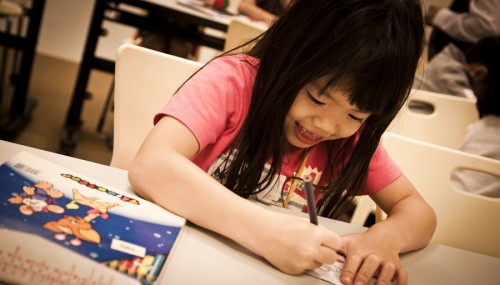When it comes to your child’s ability to learn and retain information, no one style fits all. The brain is essentially hard-wired to be receptive to certain types of teaching and learning styles. There are a number of learning styles that children respond to such as visual, auditory, bodily-kinesthetic, linguistic, logical, and even musical.
As parents, discovering your child’s learning style and working with it can create an optimal learning experience for them. Not only will they do better in exams and formal assessment, they will also discover innate talents that can be further developed.
Read the following descriptions of different learning styles – which style does each of your children possess? You may be surprised to find that even among siblings, learning styles can be vastly different.

Visual Learners
Children who respond best to a visual learning style are receptive to instruction that includes written, modeled, and diagrammed material. They learn well from visual media sources such as videos, and develop an aptitude for visual-oriented occupations such as computer graphic design, architecture, photography, and fashion design.
Auditory Learners
With the auditory learning style, the focus is primarily on oral presentation. Students with an auditory learning style may not fully understand educational material when they just read about it. It makes more sense to them when they listen to the topic presented orally. Auditory learners can understand the true meaning of someone’s words because they recognize audible clues such as changes in tone.
Bodily-Kinesthetic Learners
This style is commonly associated with the sense of touch. Children who have a kinesthetic learning style do well with hands-on activities. They understand information better when they can be actively involved with the materials. These children tend to be drawn to hobbies that involve physical activity and movement such as sculpting, drawing, and the performing arts.
Linguistic Learners
Children with a linguistic learning style commonly excel at learning when it involves language. They respond well to learning from reading, working out mathematical stories like problem sums, and playing word games. They enjoy learning new words and discovering ways to creatively use language. They commonly pursue language-focused occupations such as writing, teaching, and law.
Logical-Mathematical Learners
Children with a strong mathematical learning style are highly detail-oriented. They are able to logically analyze and work through complex learning materials. These children are commonly drawn toward technology, chemistry, and other sciences. They work best in a structured and organized environment where they can apply logical (often mathematical) methods to solving problems. Children who are mathematically-inclined tend to be adept at visual- and memory-oriented activities. They also enjoy hands-on processes such as electronic circuitry and computer programming.
Musical Learners
Children who possess musical talent are commonly creative and enjoy musical activities such as playing multiple instruments and participating in performing arts. Having a musical ability can also be a valuable asset for learning. Children with an aptitude toward music have a good auditory memory. They respond well to musical passages and rhymes, which help the students recall information that they might normally struggle with remembering.
Working With Your Child’s Learning Style
Educators usually have all the materials necessary to accommodate all of the learning styles. This allows students to gravitate to the method they feel most comfortable with. Some teachers are known to help students expand their learning style by requiring them to complete assignments using a specific learning style outside of their comfort zone. However they feel that it’s best to focus on their inherent strengths.
“It’s amazing how fast kids pick up a skill when you help them discover their strengths,” says David Anderson, Ph.D., Special Physical Education teacher in Salt Lake City, Utah. “As a way to help kids reinforce their learning style, I often have them work with other kids on skills development.”
While children might respond fairly well to a few learning styles, they likely are stronger with one type of learning. When you identify what type of learners your children are, you can use the appropriate learning materials to boost their overall learning and development ability.
Tags: Kindergarten (5-7), Lower Primary (7-10), Upper Primary (10-12)